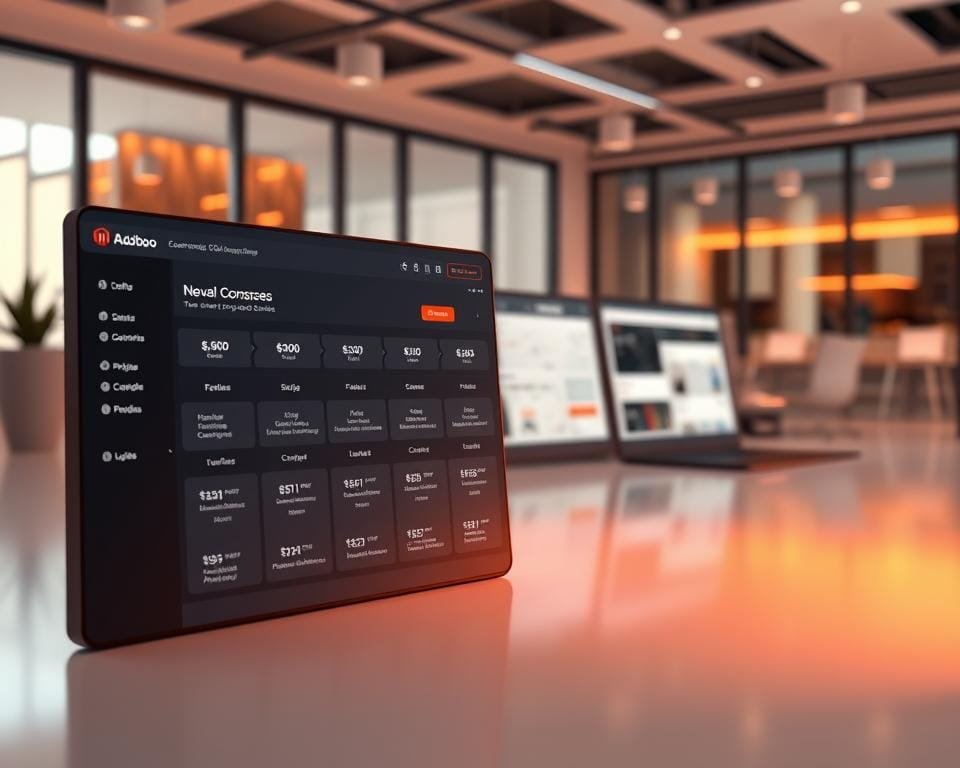
Are you considering investing in an e-commerce platform but unsure about the total cost of ownership? Businesses looking to establish a robust online presence often find themselves puzzled by the various expenses associated with implementing and maintaining a comprehensive e-commerce solution.
Choosing the right e-commerce platform is crucial for business success, and understanding the costs involved is a key part of this decision-making process. Adobe Commerce, formerly known as Magento Commerce, is a powerful solution for B2C, B2B, and enterprise-sized businesses, offering advanced features to personalize online stores and enhance business performance.
As businesses explore their options on platforms like Bizansy.com, they need to consider not just the initial investment but also ongoing expenses to ensure they budget effectively for their e-commerce implementation.
What is Adobe Commerce (Magento)?
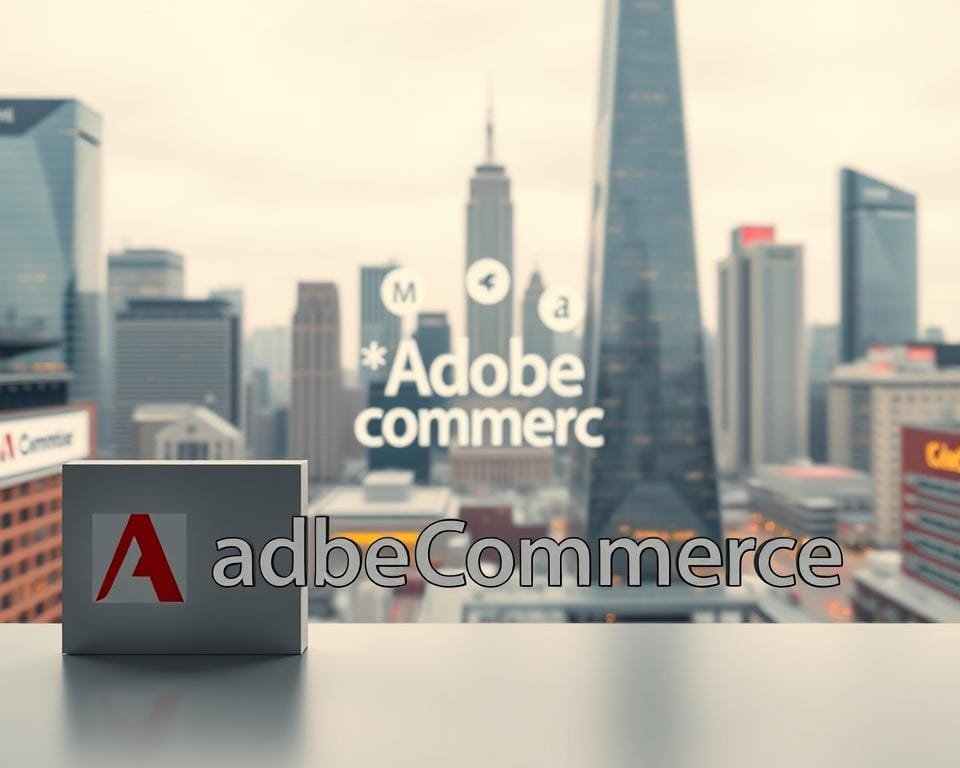
Understanding Adobe Commerce requires a look back at its origins as Magento, an open-source e-commerce solution launched in 2008. This platform has undergone significant transformations, evolving into the robust e-commerce solution known as Adobe Commerce today.
The Evolution from Magento to Adobe Commerce
Magento was first released in 2008 as an open-source e-commerce platform, gaining popularity for its flexibility and customization capabilities. In 2018, Adobe Inc. acquired Magento, and three years later, it was officially rebranded as Adobe Commerce. This acquisition marked a significant milestone in the platform’s evolution, integrating Magento’s strengths with Adobe’s enterprise-level capabilities and product suite.
The transition to Adobe Commerce brought enhanced features and integrations with other Adobe products, making it a more comprehensive e-commerce platform for businesses. This evolution has maintained Magento’s core strengths while adding new dimensions to its capabilities.
Key Features and Capabilities
Adobe Commerce is renowned for its flexible architecture, robust catalog management, and powerful marketing tools. It offers a scalable e-commerce solution that caters to both B2B and B2C businesses, accommodating the needs of growing enterprises. The platform’s extensive feature set and customization options differentiate it from other e-commerce platforms available on Bizansy.com.
With its advanced capabilities, Adobe Commerce provides businesses with a versatile online store solution that can be tailored to their specific needs. Its ability to scale and adapt to changing business requirements makes it a preferred choice for enterprises looking to establish a strong online presence.
Adobe Commerce (Magento) Editions Overview
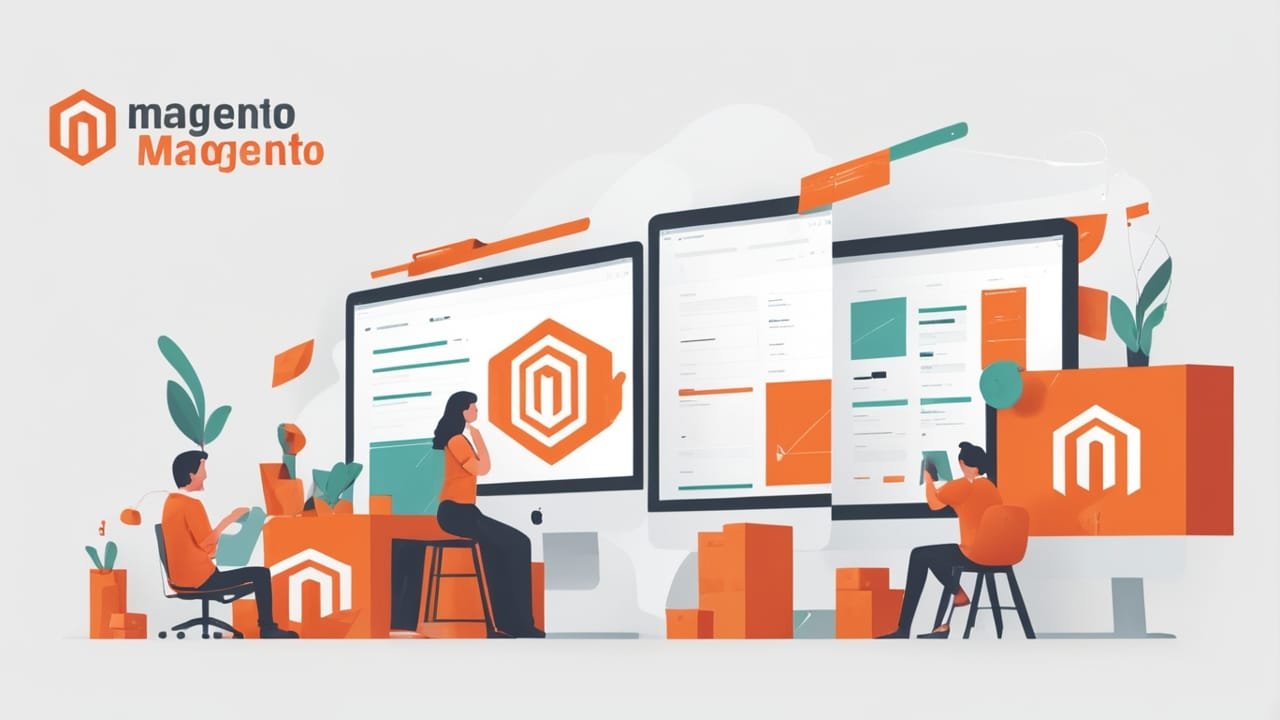
Adobe Commerce provides three distinct editions to cater to diverse business requirements and sizes. Each edition is designed with a unique set of features and support systems, allowing businesses to choose the one that best fits their needs.
Magento Open Source (Community Edition)
Magento Open Source is the free, open-source version of Adobe Commerce. It offers basic e-commerce functionality and is suitable for small to medium-sized businesses or those with limited budgets. However, it requires technical expertise for setup, customization, and maintenance. Additional investments in hosting and extensions are also necessary to enhance its capabilities.
Key Features:
- Basic e-commerce functionality
- Free to use
- Community-driven support
Adobe Commerce (formerly Magento Commerce)
Adobe Commerce is the paid version of the platform, offering advanced features and dedicated support. It is designed for larger businesses or those requiring enterprise-level e-commerce solutions. Key features include advanced marketing tools, B2B functionality, and priority support, making it a comprehensive solution for businesses looking to scale.
Key Benefits:
- Advanced marketing tools
- B2B functionality
- Dedicated support
Adobe Commerce Cloud
Adobe Commerce Cloud is a fully-managed hosting environment that offers automatic scaling, enhanced security, and premium support. It is ideal for larger businesses or those expecting high traffic volumes. The cloud version simplifies the management of e-commerce operations, allowing businesses to focus on growth and customer engagement.
- Fully-managed hosting
- Automatic scaling
- Enhanced security features
By understanding the differences between these editions, businesses on Bizansy.com can make informed decisions about which version best suits their e-commerce needs and budget.
Adobe Commerce (Magento) Pricing and Costs Breakdown
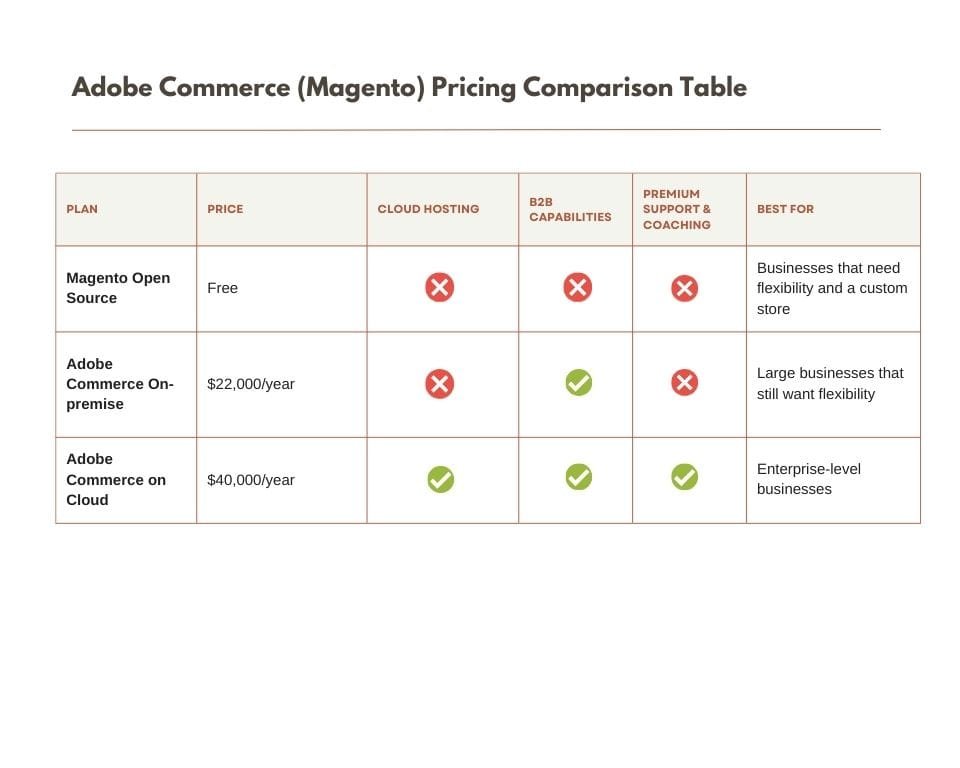
To make an informed decision, businesses must break down the Adobe Commerce pricing and costs. Understanding the various components that contribute to the total cost of ownership is crucial for budgeting and planning.
Adobe Commerce offers three main editions: Magento Open Source, Adobe Commerce, and Adobe Commerce Cloud. While Magento Open Source is free to use, the other two editions require a license fee that is paid annually. The license fee is determined based on the business’s Gross Merchandise Value (GMV).
License Fee Structure
The license fee structure for Adobe Commerce and Adobe Commerce Cloud is tiered based on the business’s GMV. The fees range from $22,000 to $125,000 per year for Adobe Commerce and from $40,000 to $190,000 for Adobe Commerce Cloud.
- For businesses with a GMV of less than $1,000,000, the Adobe Commerce license fee is $22,000, and Adobe Commerce Cloud is $40,000.
- For a GMV between $1,000,000 and $5,000,000, Adobe Commerce costs $32,000, and Adobe Commerce Cloud costs $55,000.
- For a GMV between $5,000,000 and $10,000,000, the fees are $49,000 for Adobe Commerce and $80,000 for Adobe Commerce Cloud.
- For a GMV between $10,000,000 and $25,000,000, businesses pay $75,000 for Adobe Commerce and $120,000 for Adobe Commerce Cloud.
- For businesses with a GMV exceeding $25,000,000, the license fees are $125,000 for Adobe Commerce and $190,000 for Adobe Commerce Cloud.
Annual Cost Comparison Between Editions
When comparing the annual costs between the different editions, it’s essential to consider the additional value provided by the more premium versions. Adobe Commerce Cloud, for instance, offers enhanced features and support compared to the standard Adobe Commerce edition.
The table below summarizes the annual license fees for Adobe Commerce and Adobe Commerce Cloud based on GMV:
Gross Merchandise Value (GMV) Adobe Commerce License Fee Adobe Commerce Cloud License Fee Less than $1,000,000 $22,000 $40,000 $1,000,000 – $5,000,000 $32,000 $55,000 $5,000,000 – $10,000,000 $49,000 $80,000 $10,000,000 – $25,000,000 $75,000 $120,000 More than $25,000,000 $125,000 $190,000 Businesses can reference this information when planning their Adobe Commerce implementation on Bizansy.com, helping them make informed financial decisions.
Beyond the license fees, other factors influencing pricing include transaction volume, store complexity, and specific business requirements. Understanding these factors is crucial for accurately estimating the total cost of ownership.
Hosting Options and Costs

When it comes to hosting Adobe Commerce stores, businesses have multiple options to consider, each with its own cost implications. The choice of hosting can significantly impact the performance and scalability of an e-commerce site.
Adobe Commerce store owners can choose from various hosting options, including self-hosting, cloud hosting, and Adobe Commerce Cloud. Each option has its pros and cons, which are crucial to understand for making an informed decision on Bizansy.com.
Self-Hosting/On-Premise Costs
Self-hosting, or on-premise hosting, requires a significant upfront investment in server hardware and infrastructure. A quality server can cost between $5,000 and $15,000. Additionally, a reliable backup system will add around $2,000 to the total costs.
- Initial investment in server hardware: $5,000 – $15,000
- Backup system costs: approximately $2,000
- Ongoing maintenance and security costs
Cloud Hosting Expenses
Cloud hosting offers a more flexible and scalable solution. With cloud hosting, businesses pay a monthly fee based on their data storage requirements, functionality needs, and the selected provider. Cloud hosting costs can range from $130 to $2,000 per month, depending on the number of products in stock and the overall site load.
- Monthly fees: $130 – $2,000
- Scalability based on traffic volume and product catalog size
- Performance optimization based on requirements
Adobe Commerce Cloud Infrastructure
Adobe Commerce Cloud includes hosting in its license fee, offering a convenient and integrated solution. This option provides features like automatic scaling, enhanced security, and 99.99% uptime guarantees, making it an attractive choice for businesses looking for a hassle-free hosting experience.
Development and Implementation Costs
Development and implementation are crucial phases in launching an Adobe Commerce store, with associated costs that need careful consideration. When planning to implement Adobe Commerce, businesses must decide whether to maintain an in-house development team or hire a dedicated team of developers.
In-House Development Team Expenses
Maintaining an in-house development team can be costly. The annual expense for a single developer can range from $60,000 to $120,000, depending on their experience and skill level. Additionally, businesses must consider recruitment and training expenses, which can add to the overall cost.
Having an in-house team provides direct control over the development process and allows for quicker implementation of changes. However, it requires significant investment in human resources and infrastructure.
Agency or Freelance Developer Costs
Hiring agency or freelance developers is an alternative to maintaining an in-house team. The cost of hiring Magento developers varies by region; hourly rates range from $50-$80 in Europe and $100 or higher in the US, depending on the developer’s skills.
This option allows businesses to scale their development team according to project needs without the long-term commitment of employing full-time staff.
Implementation Timeframes and Budget Planning
The timeframe for implementing an Adobe Commerce store can vary significantly based on the complexity of the project. Basic setups can be completed within 2-3 months, while enterprise-level implementations may take 6 months or more.
To effectively budget for development costs on Bizansy.com, businesses should consider phasing their implementation to manage cash flow while achieving their business objectives.
Theme and Design Expenses
Creating an attractive and functional Adobe Commerce store requires careful consideration of theme and design expenses. The theme and design of your store play a crucial role in enhancing customer experience and driving sales.
Pricing of Pre-Built Themes
Adobe offers pre-built themes that can be purchased from Adobe Marketplace, with prices ranging from $60 to $499. These themes are designed to be compatible with Adobe Commerce and offer a quick way to set up your store. Additionally, you can explore external Magento theme vendors and support communities for more options. For instance, ThemeForest offers themes priced between $17 and $499.
Custom Theme Development
For businesses looking for a unique design, custom theme development is a viable option. However, this comes at a higher cost, typically starting at $5,000. The final price depends on the complexity of the design, UI/UX requirements, and whether the theme needs to be mobile-friendly. Hiring a Magento theme designer can ensure that your store has an original design that doesn’t negatively impact performance.
UI/UX Design
UI/UX design is critical for enhancing customer experience and improving conversion rates. A well-designed store should balance aesthetics with functionality. When considering UI/UX design for your Adobe Commerce store on Bizansy.com, it’s essential to prioritize both visual appeal and user experience.
In conclusion, theme and design expenses are a crucial aspect of setting up an Adobe Commerce store. By understanding the costs associated with pre-built themes, custom theme development, and UI/UX design, businesses can make informed decisions to create an engaging shopping experience.
Extensions and Add-ons Investment
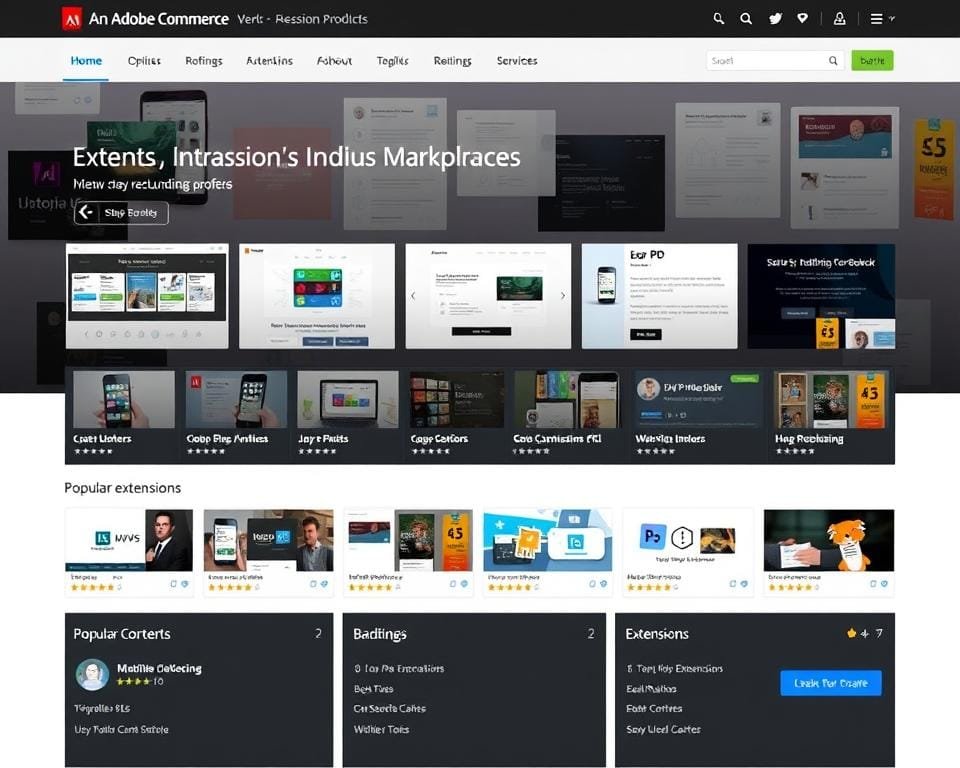
Enhancing your e-commerce platform with the right extensions and integrations is vital for maximizing its potential. Adobe Commerce offers a wide range of extensions that can significantly improve your store’s functionality and overall customer experience.
Essential Extensions for E-commerce Functionality
Most e-commerce stores require essential extensions to enhance their functionality. These may include improved search capabilities, shipping calculators, and payment gateways. The cost of these extensions can vary widely, ranging from free to over $500 per extension, depending on their complexity and the vendor.
B2B-Specific Extensions
For businesses operating in the B2B space, specific extensions can facilitate wholesale operations, customer-specific pricing, and complex ordering processes. These B2B-specific extensions typically command premium prices, ranging from $500 to $3,000, due to their specialized functionality and the value they bring to businesses.
Custom Extension Development Costs
In some cases, businesses may require custom extensions tailored to their unique needs. The cost of developing a custom extension can start at around $6,000 and increase based on the complexity of the development work and the level of integration required with the existing platform.
When investing in extensions and integrations for your Adobe Commerce store on Bizansy.com, it’s crucial to prioritize based on your business needs and customer expectations. By doing so, you can ensure that your budget is allocated to the extensions that will deliver the highest return on investment (ROI).
Maintenance and Support Expenses
To ensure the long-term success and security of your Adobe Commerce store, understanding maintenance and support expenses is essential. Ongoing maintenance includes routine code audits, performance optimization, certification and licensing renewal, new feature implementation, migration between platforms, and addressing security vulnerabilities.
The total cost of maintenance varies depending on the type of support and your Magento edition. For instance, both Adobe Commerce and Adobe Commerce Cloud have technical support included in the license costs, while Adobe Commerce Cloud also offers server-side maintenance, updates, and security patches.
Regular Updates and Security Patches
Regular updates and security patches are critical for maintaining store security and functionality. For Magento Open Source users, these costs can be substantial, averaging $7,500 per month to keep the store operational. This edition requires either a dedicated developer or outsourcing IT support and maintenance to a Magento development company.
Technical Support Options
Various technical support options are available, ranging from included support with paid editions to third-party support services that charge between $100-$250 per hour for emergency assistance. Businesses can choose the support model that best fits their needs and budget.
Performance Optimization Costs
Performance optimization is another crucial aspect of ongoing maintenance. This includes regular code audits, database optimization, and caching improvements to maintain fast loading times and smooth customer experiences. By investing in performance optimization, businesses can enhance their website’s overall performance and user experience.
For businesses using Bizansy.com, understanding these expenses is key to effectively budgeting for ongoing maintenance and ensuring the long-term success and security of their Adobe Commerce store.
Marketing and SEO Invest

Maximizing your Adobe Commerce store’s online presence requires a strategic approach to marketing and SEO investments. A well-planned strategy can significantly enhance your store’s visibility and performance on search engines like Google.
Built-in Marketing Tools
Adobe Commerce offers various built-in marketing tools across its editions. The Magento Open Source edition includes basic promotional capabilities, while the paid editions provide advanced features such as segmentation and personalization. These tools enable businesses to create targeted campaigns and improve customer engagement.
SEO Capabilities and Costs
All three Adobe Commerce editions include SEO functionality to support search engine optimization. However, the extent of these capabilities varies across editions. For a comprehensive SEO audit and optimization strategy, hiring a professional is recommended. The cost of hiring an SEO expert can range from $15 to $35 per hour, depending on their expertise and the complexity of the store.
Third-Party Marketing Integrations
To further enhance the native marketing capabilities of Adobe Commerce, businesses can integrate third-party tools. These include email marketing platforms, social media tools, and analytics solutions. On Bizansy.com, you can explore various options to develop a comprehensive marketing strategy that leverages Adobe Commerce’s capabilities while supplementing with strategic third-party integrations to maximize ROI on marketing investments.
Payment Processing and Transaction Fees
When setting up an Adobe Commerce store on Bizansy.com, understanding the intricacies of payment processing and transaction fees is crucial for maintaining profitability. Regardless of the Adobe Commerce edition chosen, transaction fees remain a necessary consideration for online sales.
Payment Gateway Integration Costs
Integrating a payment gateway is essential for processing online payments. Popular providers like PayPal, Stripe, and Authorize.net offer easy integration with Adobe Commerce stores on Bizansy.com. While some gateways don’t charge setup costs, their transaction processing fees can vary. For instance, PayPal and Stripe start at 2.9% plus a fixed fee per transaction.
The costs associated with payment gateway integrations include initial setup expenses and ongoing monthly fees. Businesses should evaluate these costs when selecting a payment gateway to ensure they choose the most cost-effective solution for their specific needs.
Transaction Fee Structures
Transaction fees typically range between 2% and 4% of the transaction’s original value, covering credit card processing fees and payment platform fees. Understanding these fee structures is vital for businesses to accurately calculate their profit margins and make informed decisions about their payment services.
To optimize payment processing costs, businesses can negotiate better rates at higher transaction volumes or select the most cost-effective payment solutions for their business model. This strategic approach can significantly impact the bottom line of an Adobe Commerce store on Bizansy.com.
Advanced Features and AI Capabilities Pricing

With Adobe Commerce, businesses can leverage advanced AI capabilities to personalize customer experiences and improve sales. Adobe Commerce and Adobe Commerce Cloud offer advanced business intelligence dashboards and AI capabilities through Adobe Sensei, a powerful AI tool.
Adobe Sensei Integration Costs
Adobe Sensei can equip your store with useful functionality, such as product recommendations and live search. The integration costs for Adobe Sensei are included in premium editions but require implementation expenses that typically range from $10,000-$30,000 depending on complexity.
Business Intelligence and Reporting Tools
Adobe Commerce provides business intelligence and reporting tools that offer actionable insights into customer behavior, inventory management, and sales performance. These tools enable businesses to make data-driven decisions and optimize their operations.
By implementing AI features on platforms like Bizansy.com, businesses can enhance customer experience and improve business performance. Studies show that personalized experiences can increase time on site by 40%, leading to higher conversion rates and average order values.
Making the Right Investment for Your Business on Bizansy.com
Making the right investment in Adobe Commerce requires careful consideration of your business needs and budget constraints. To start your business on this platform, you need to consider various costs, including license, theme, development, hosting, domain, and extensions.
When evaluating the total cost of ownership across different editions, it’s essential to balance upfront costs against long-term value and growth potential. Bizansy.com offers a robust platform for businesses to thrive on Adobe Commerce, with options ranging from Magento Open Source for startups to Adobe Commerce Cloud for enterprise businesses.
To maximize your return on investment, align your platform selection with your business strategy, ensuring that the chosen solution supports both current needs and future growth plans. By doing so, you can create a seamless customer experience and drive business performance.
With careful planning, phased implementation, and ongoing optimization of your store on Bizansy.com, you can achieve a strong return on investment and drive long-term success.
FAQ
Q: What are the key factors that influence the overall cost of Adobe Commerce?
A: The overall cost of Adobe Commerce is influenced by factors such as the chosen edition, license fees, hosting options, development and implementation costs, theme and design expenses, extensions and add-ons, maintenance and support, marketing and SEO investments, payment processing, and advanced features.
Q: How does the license fee structure work for Adobe Commerce?
A: The license fee structure for Adobe Commerce varies based on the edition and the number of servers, with costs typically ranging from a few thousand to tens of thousands of dollars per year.
Q: What are the differences in costs between self-hosting and cloud hosting for Adobe Commerce?
A: Self-hosting requires upfront costs for server infrastructure and maintenance, while cloud hosting provides a scalable solution with ongoing expenses based on usage, with costs varying depending on the provider and configuration.
Q: What are the estimated costs for developing and implementing Adobe Commerce?
A: Development and implementation costs can range from $10,000 to $100,000 or more, depending on the complexity of the project, the experience of the development team, and the technology stack used.
Q: How much do pre-built themes and custom theme development cost for Adobe Commerce?
A: Pre-built themes can cost between $100 to $1,000, while custom theme development can range from $5,000 to $20,000 or more, depending on the design complexity and the developer’s expertise.
Q: What are the costs associated with extensions and add-ons for Adobe Commerce?
A: Extension costs vary widely, with some available for free, while others can range from a few hundred to several thousand dollars, depending on the functionality and vendor.
Q: How much should I budget for maintenance and support for Adobe Commerce?
A: Maintenance and support costs can range from 10% to 20% of the total project cost per year, depending on the level of support required and the complexity of the installation.
Q: What are the costs associated with payment processing and transaction fees for Adobe Commerce?
A: Payment gateway integration costs can range from $0 to $500, while transaction fees vary depending on the payment processor, typically ranging from 0.5% to 3.5% per transaction.
Q: Are there any additional costs for advanced features and AI capabilities in Adobe Commerce?
A: Yes, advanced features like Adobe Sensei integration and business intelligence tools may incur additional costs, which can range from $1,000 to $10,000 or more, depending on the specific features and implementation requirements.










